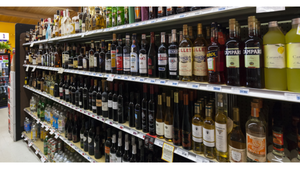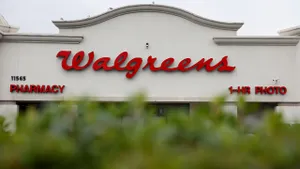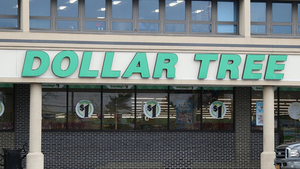Join the club
More consumers are choosing a retail outlet based on the quality and value of fresh foods and club stores are making a strong statement.
January 1, 2018
More consumers are choosing a retail outlet based on the quality and value of fresh foods and club stores are making a strong statement. Where does a consumer go to purchase a kayak, bath towels, a vacuum cleaner and two-dozen apples in one shopping trip? The local club store, of course. Known for offering large packages of everyday goods alongside unique finds, club stores have attracted a following of consumers looking for high-quality products and services that include everything from furniture to HBC to liquor to groceries. While many members still approach club stores with a treasure hunt mentality, more are now walking out with their grocery staples—and that includes fresh foods and produce. “Our research shows more consumers are visiting a club store for their major shopping trip of the month and then filling in at smaller retail outlets, and they are purchasing everything from meat to frozen to laundry detergent to fresh foods,” says Tracey Altman, vice president of marketing for Fresherized Foods, maker of Wholly Guacamole. Buyers at warehouse club stores are using the same decision making process for selecting produce and fresh offerings as they do other merchandise—quality comes first. “From the very start club stores have done a masterful job of identifying suppliers that deliver a product higher in quality,” says Steve Lutz, executive vice president for the Nielsen Perishables Group. “A shopper cannot enter a club store and pick up one or two apples so they are making a significant investment into each transaction. If the quality is bad, the store will lose a produce shopper—potentially for a long-time.” That can add up to a large loss. According to research by Nielsen Perishables Group, based in Chicago, the average basket ring at a warehouse store is $99, compared to $63 at supercenters and $44 at a traditional grocery outlet. However, like its CPG and non-food category counterparts, the fresh food selection remains limited to best-selling staples and one-off finds, leaving the success of produce sales dependent, almost solely, on the right selection, say observers. Buyers have done a good job abiding by the 80/20 rule, says Lutz. “Club stores understand that in a full-size produce department 20% of the product drives 80% of the volume. Therefore, they offer a limited assortment but focus on the items that consumers are familiar with and are going to buy. Staples may include russet potatoes, avocados and two or three tomato varieties. New items or varieties will then show up for a short time to satisfy the ‘treasure hunt’ mentality consumers have when shopping at club stores.” A treasure hunt is exactly what the experience represents for many shoppers. Observers say members approach club store shopping with an open mind, ready to try new things. They add that this often helps the success of club stores’ sampling programs, something that many retailers agree does not usually prove fruitful in conventional grocery stores. This consumer mindset fuels trial and experimentation at the manufacturer level. Warehouse stores have turned their focus to not just offering the best of the best in quality but they are more readily bringing innovation into the mix. New flavors, for example, often hit the shelves of club stores weeks, months or even a year before making their way into traditional retail stores. “Club stores tend to be early adopters,” says Altman. “The shoppers are in a different mindset and each shopping trip offers them a chance to discover the next best thing. Because of this many companies view club stores as a place to test new things. Wholly Guacamole, in particular, has some fun things in the pipeline to debut in the club format. Then, if it works, we will bring it to retail.” John Cameron, director of sales at Bland Farms, agrees with Altman. “Clubs serve as a test bed for newer produce that may hit grocery a few months later or the following season,” he says. The Glennville, Ga.-based sweet onion grower has seen double-digit growth in its club sales over the last few years with its 5- to 10-pounds packs of large- or jumbo-sized sweet onions. Bland Farms typically sells 2- to 3-pound packs of medium-size sweet onions at retail. The difference, officials say, is in the packaging. Clubs sell few items in bulk bins, says Cameron, so most of their produce is packaged in clamshells of bags. In the package Packaging for club stores is one area of innovation that suppliers excel. Observers say that due to the nature of shelving, packaging needs to be durable—and attractive. Take apple cartons, says Lutz. “They are bringing in single layer plastic-molded trays, similar to an egg carton; you won’t see that apple packaging anywhere in the country except at a club store.” Many suppliers even create unique packaging for seasonal sales. Winter vegetables, such as sweet potatoes, may only make an appearance during the holidays so suppliers will create custom bins or cartons for the season. Fast forward six months and summer and winter favorites are replaced with bins of watermelons. Gordon Hunt, director of marketing and communications for the Orlando, Fla.-based National Watermelon Promotions Board (NWPB), says he has seen club stores with up to 40 watermelon bins inside. “Costco does a great job of featuring multi-bins,” he says. “They line them up along multiple aisles and eventually the shopper says, ‘we have to get one of these.’ Watermelon is usually a spontaneous purchase. Even chefs who come in for weekly supplies will be inspired by the watermelon displays and incorporate it into their weekly menus. “It really is all about how it is displayed. What retailers learn is that when they build a display, it all sells—so the bigger the display the more they sell. The last two winters when we held the largest display contest both winners underestimated the amount of watermelon they would need. Shoppers see it and then tell their friends,” he adds. Shifts in consumers’ eating habits dictate packaging changes quicker at club stores than elsewhere, say observers. Currently, the industry is seeing a trend towards healthier snacking, which is driving suppliers to develop multi-packs of small containers instead of the larger single packs warehouse clubs are traditionally known for. Wholly Guacamole, with extensive campaigning to promote its product as an everyday condiment and more than just a party dip, now offers club store packs with six smaller packages instead of one large tub, says Altman. “The use of guacamole has changed. You cannot buy a 1-pound container to use on sandwiches so we offer everything from a 7-ounce to a 1-pound container.” Sun-Maid Raisins offer another example. The Kingsburg, Calif.-based grower has a Raisin Twin Pack Box and an Organic Raisin Twin Pack Box. Joe Tamble, vice president of sales, says the twin packs are a popular item with consumers because they offer a large quantity of Sun-Maid raisins while maintaining freshness. Club stores make up a large percentage of sales for the raisin supplier, and officials are seeing continued growth as the channel continues to expand. Value included Observers say what it boils down to is value. With a smaller margin than traditional retail stores, the consumer wins because they are getting a good price and the store wins because they are achieving a higher average basket ring. Consumers are attracted to the value proposition in club stores, says Gina Nucci, director of Healthy Culinary Innovation for Mann Packing, based in Salinas, Calif. “As the club business continues to grow, the selection of fresh produce items continues to grow, and as a result consumers are shopping more regularly in that channel rather than traditional grocery stores.” While the format of conventional supermarkets and club stores vary, there are ways the former can compete with the latter, say observers. A focus on large packages for seasonal items helps level the playing field. Cameron at Bland Farms says some grocers will stock larger packs in their locations that are located near club stores. “It is important to keep the margins thin on club-size packs to produce a low price similar to what a club offers. The price does not have to be exactly the same, but you need to be relevant to what a club would charge,” he adds. “I have seen retailers offer club-size items at their normal margins, resulting in a large price gap. The items do not sell through and quality deteriorates on the shelf resulting in a lost opportunity.” Shoppers trust club stores to provide the “best of the best” and at a good price, say observers. Displaying that same value in traditional stores will get the same result. For bulk items, like watermelons, showing price per pound is a simple way of exhibiting value. Retailers who use the per pound price on their signage, says Hunt, are receiving feedback from consumers about how cheap it is. “Many people have a cultural memory of a watermelon costing $1.25, so $.75 per pound looks a lot better than $9.95,” he says.
About the Author
You May Also Like




